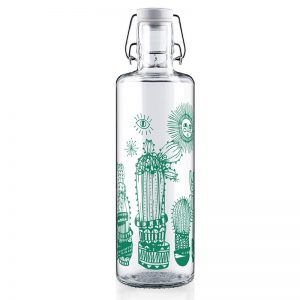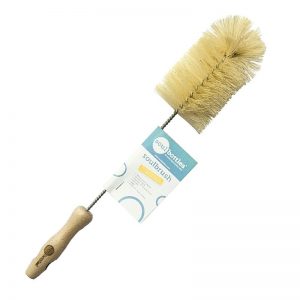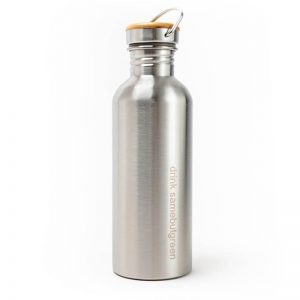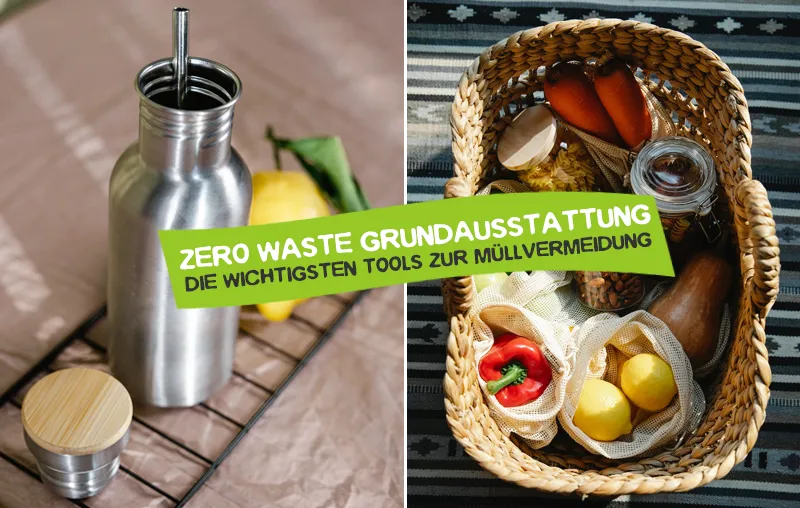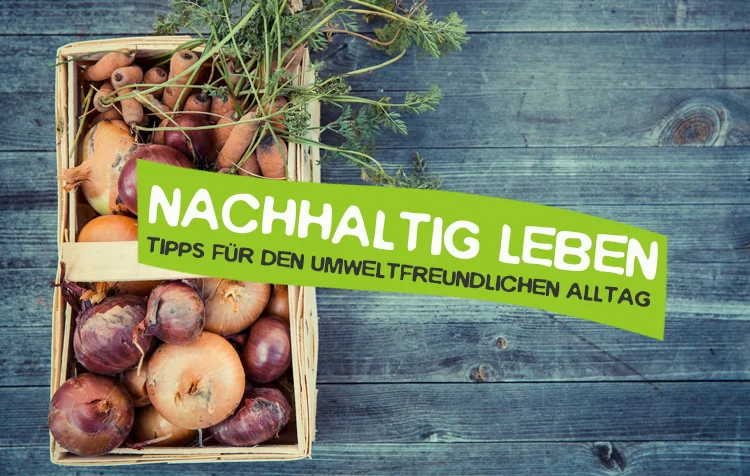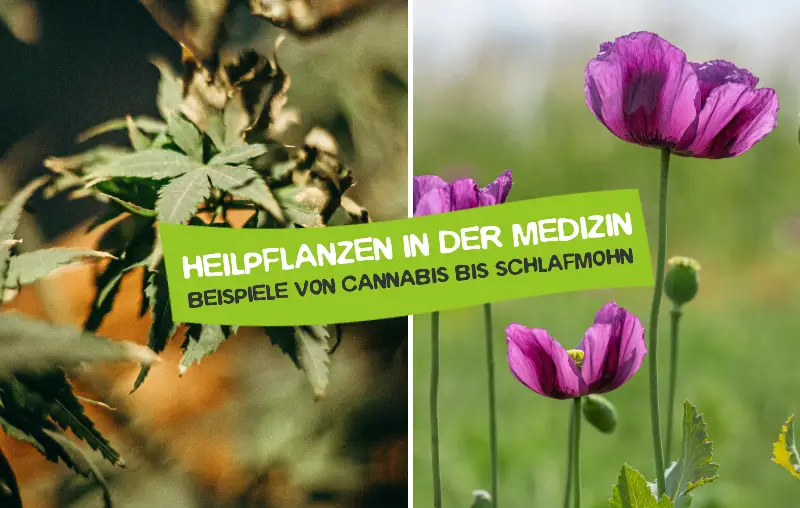Glass bottle or plastic bottle, disposable or reusable, can or Tetra Pak - which is more sustainable? If you're looking for an answer to this question, you've come to the right place!
Who tries, live more environmentally conscious and avoid waste, always comes up against its limits with the versatile beverage packaging in the supermarket or organic market. Should I buy water in reusable plastic or glass bottles? And what is most sustainable when the only choice is disposable bottles? Although there is no blanket answer to this, fortunately it only takes a few decisive factors to quickly check the sustainability of the packaging.
In this article, I'd like to explain these factors to you, compare the pros and cons of glass bottles, plastic bottles, aluminum cans, and Tetra Paks, and find out which packaging is the most sustainable choice. Let's go!
Here you can find a short overview in advance:
Factors: What does it depend on whether a package is environmentally friendly or not?
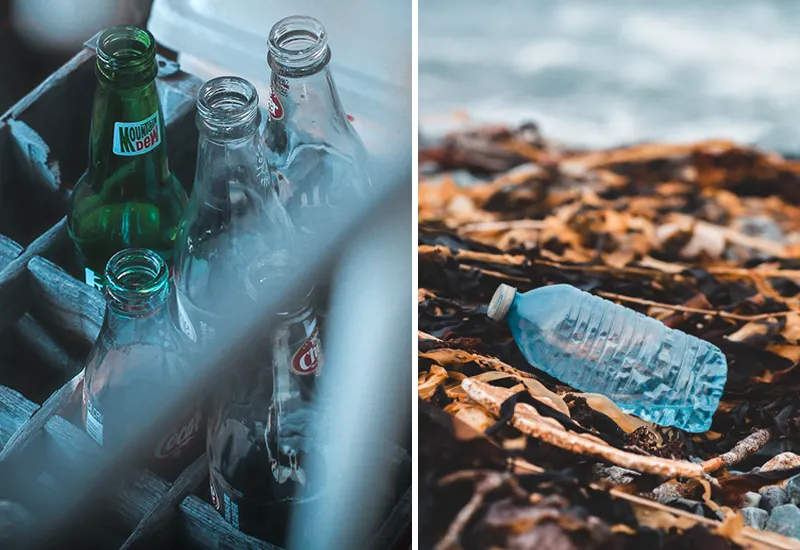
When is packaging environmentally friendly? Whether glass or plastic, whether can or beverage carton -. every packaging material has a history and also a life after use by the consumer:inside.
Accordingly, must Several factors considered to be able to assess the sustainability of a package. Before we go straight into the comparison, I would therefore like to present them to you here:
Production
The production of a packaging requires Energy and natural resources - and is often accompanied by significant CO2 emissions as well as other environmental impacts.
Reusability
Reusable packaging can be Reduce waste and reduce the need for new packaging. The more often glass bottle or plastic bottle can be used, the more environmentally friendly it is in the end, because it is the Conserves the earth's resources in everyday life.
Recycling
Recycling makes it possible to Recycle materials from packaging and produce new bottles or other products from them. This reduces waste and conserves natural resources. The Recyclability and the recycling rates are the decisive aspects in this respect.
Transportation
The Weight and the transport routes of cans, Tetra Paks, glass bottles or plastic bottles also provide information about their sustainability. Not least because transport also requires a considerable amount of energy and can emit climate-damaging CO2. Transport load and distance must therefore also be taken into account in the assessment.
Pollution
If beverage packaging is not properly reused or recycled, it often ends up in nature. The so-called Littering is not only a massive environmental pollution, but also represents a great danger for wildlife dar.
Accordingly, also play the biodegradability and the Motivation of consumers for proper disposal play a major role in environmental compatibility.
Pros and cons: Are glass bottles more environmentally friendly than plastic bottles, cans and Tetra Paks?
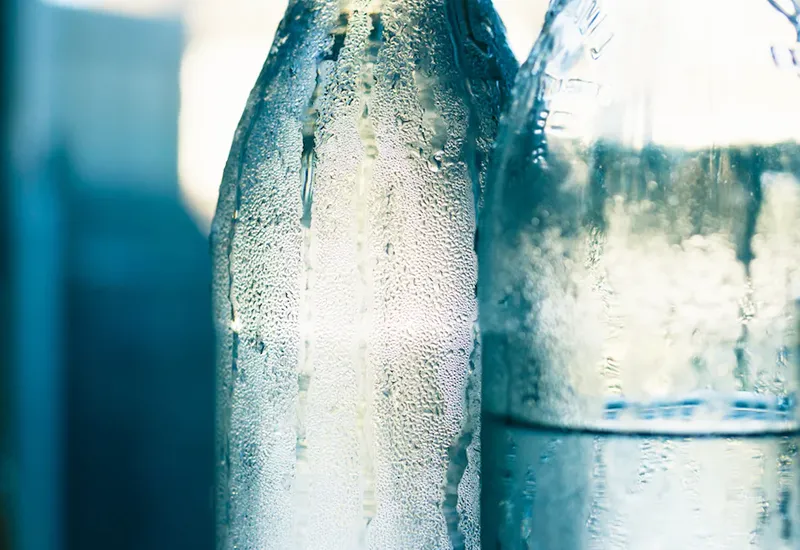
Now that the decisive factors for sustainable beverage bottles are known, we can create a meaningful comparison of the pro and con arguments make. Below I have highlighted them for you for glass bottles, plastic bottles, aluminum cans and Tetra Paks respectively.
Glass bottles
Advantages:
- Reusability: A Glass bottle has a long shelf life, is fully recyclable and, according to the Federal Environment Agency, can be reused up to 50 times before a new glass bottle is made from the material. PET returnable bottles, on the other hand, can be refilled a maximum of 20 times.₁
- Deposit system: In Germany, almost all glass bottles have a monetary equivalent that can be exchanged at the beverage store. This is a significant incentive to reuse for consumers.
- Health: Glass bottles are inert and do not react with the food stored in them, so there is no danger to our health.
- Recycling: Glass bottles can be 100 percent recycled - the recycling rate in Germany was a proud 84.2 percent in 2020.₂
Disadvantages:
- Weight: Glass bottles are heavy and fragile, which makes transport more difficult, more vulnerable, and more energy-intensive. The greater the transport distance, the worse the eco-balance.
- Production: The production of glass bottles requires a large amount of energy and water and emits large amounts of CO2.
- Recycling: Recycling glass bottles requires extensive sorting and crushing to turn them back into raw glass and make new products from it.
Plastic bottles
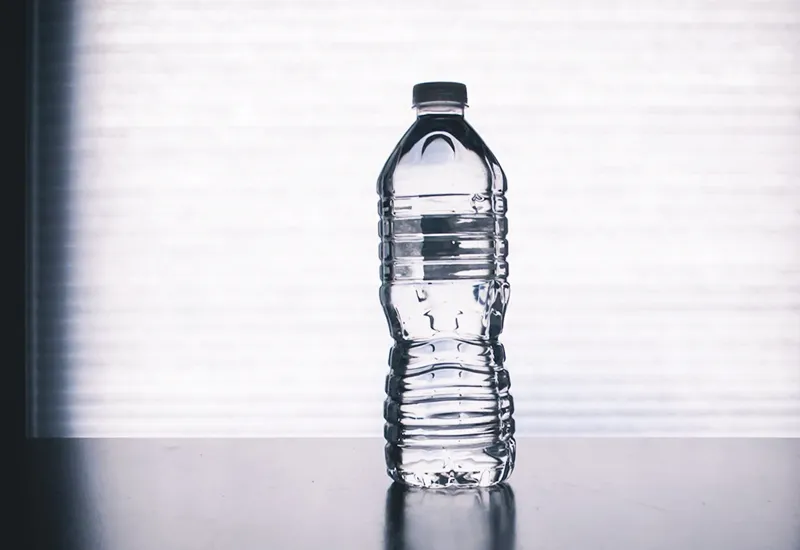
Advantages:
- Weight: PET bottles are lightweight and more climate-friendly to transport than heavy glass bottles.
- Breaking strength: Plastic bottles last forever and do not break as quickly as glass bottles.
- Recycling: Plastic bottles can also be reused, recycled and made into new bottles or other plastic products.
- Deposit system: Many plastic bottles sold in Germany are subject to the Deposit system and can be exchanged by consumers.
- Manufacture: Plastic bottles require less energy to manufacture than glass bottles, but must be recycled more frequently.
Disadvantages:
- Environmental impact: Plastic bottles are not biodegradable, remain in the environment for up to 450 years and have then turned into harmful Microplastics decomposed.₃
- Resources: The production of plastic bottles relies on the limited raw material petroleum and also emits large amounts of CO2.
- Health: Plastic bottles can contain harmful chemicals that can transfer to the bottle contents, especially when exposed to sunlight for long periods of time.
Aluminum cans
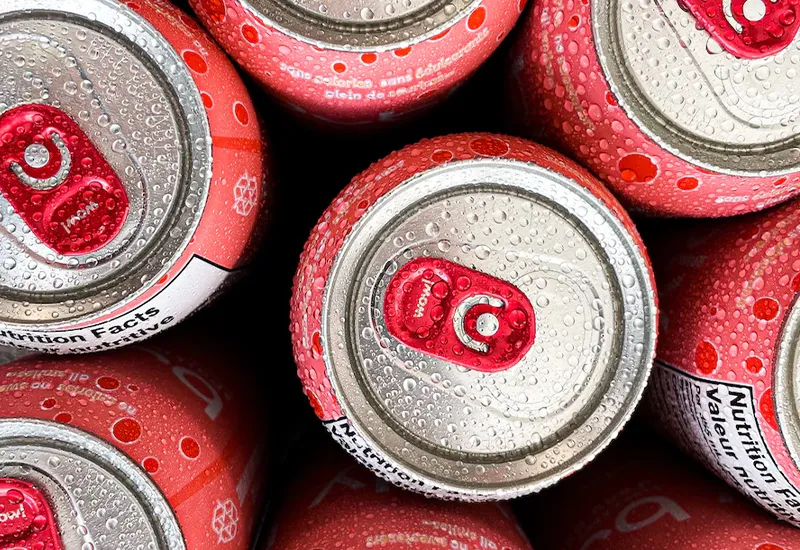
Advantages:
- Transportation: Aluminum cans are unbreakable, lightweight and also have a long shelf life.
- Recycling: Aluminum cans are 100 percent recyclable. The material can be reused very often.
Disadvantages:
- Production: The production and also the recycling of cans requires new raw materials, which mainly come from South America, Asia or Australia, require additional transport routes and, among other things, are necessary for the Deforestation of the rainforests provides.
- Reuse: Cans are not resealable and can therefore be used by consumers only once.
- Environmental impact: Aluminum cans can survive in the environment for at least 50 years and pose a great danger to animals, not least because of possible sharp edges.₄
Tetra Paks
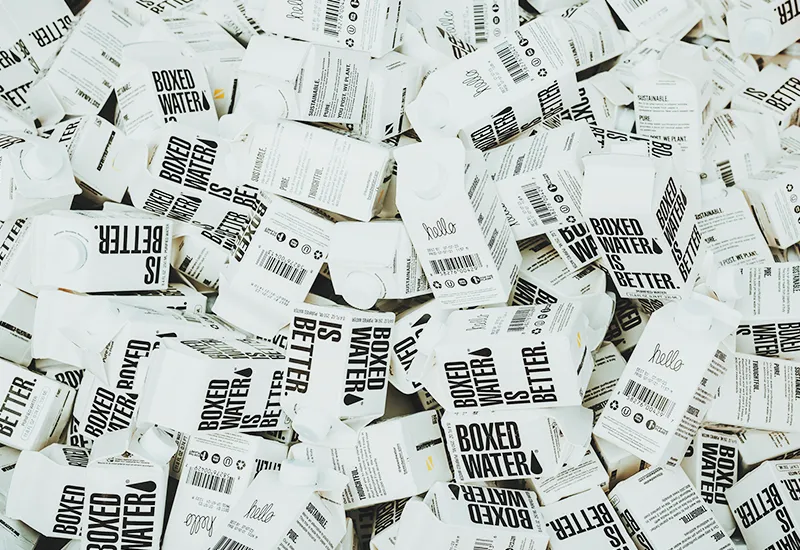
Advantages:
- Transportation: Beverage cartons are lightweight, strong and save space during transportation because they are stackable.
- Raw materials: Tetra Paks are partly made of paper, as a renewable raw material. Often even paper from sustainable forestry set.
Disadvantages:
- Recycling: At only 30 percent₅, Tetra Paks have a lower recycling rate than glass bottles or plastic bottles. Mainly because the material mix of plastic, aluminum and paper is difficult to recycle.
- Biodegradability: Since beverage cartons are also made of plastic, among other materials, they are a danger to animals when disposed of in nature. They only decompose in the environment in about 100 years.₆
Selection: Which beverage packaging is most sustainable?
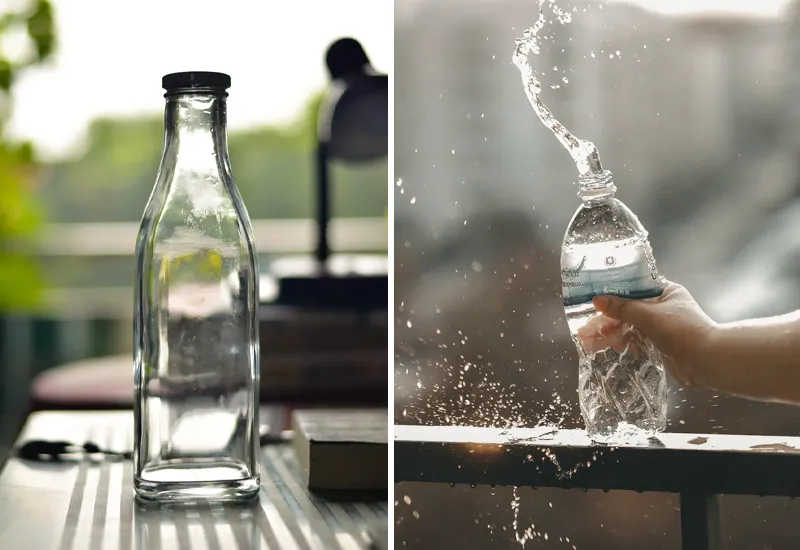
The above advantages and disadvantages at least provide information on the general sustainability of the two beverage containers. The Federal Environment Agency advises in principle quite clearly to beverages from reusable bottles from the regionsince the material is reused and transport distances are short.₇ Regional water has the best carbon footprint.
So the question of "disposable or reusable?" is settled. Cans and beverage cartons are eliminated. But what about glass bottles or plastic bottles? The German Federal Environment Agency sees only marginal differences in the life cycle assessment of glass and PET bottles, depending on their area of use, and considers both beverage bottles to be sustainable.
In the end, it is also crucial how we consumers deal with it. How often do we refill a glass bottle or plastic bottle? Are they disposed of properly so that they can be recycled or reused? These are crucial factors.
Whether glass bottle or plastic bottle: the most sustainable, environmentally friendly and healthy drink is in the end still the Tap water consumption from the eternally reusable, own drinking bottle.
Tip: If the water from the tap tastes too boring to you, you should definitely take a look at my continuing article, to give your Give taste to tap water.
Returnable glass bottles and returnable plastic bottles have the best eco-balance
So both glass bottles and plastic bottles do well in eco-tests. Personally, however, I prefer the glass bottles to the plastic bottles, because I like to use as much plastic free living and do not want any artificial residues in my beverages.
When I buy water, I also make sure that it is regional water that comes in reusable bottles. As a rule, however, I drink tap water from such a Glass bottle with swing stopper*.
I really hope that I could help you with this article. Do you have questions, suggestions or a completely different answer to the question "glass or plastic"? Then I look forward to your comment.
Stay sustainable,

PS: As you basically regional shopping I'll explain how you can do this in the next blog article. Good luck with the implementation!
References:
₁,₇ Federal Environment Agency: Reusable bottles (as at: 24.08.2017), available at https://www.umweltbundesamt.de/umwelttipps-fuer-den-alltag/essen-trinken/mehrwegflaschen. [11.05.2023].
₂ German Federal Ministry for the Environment, Nature Conservation, Nuclear Safety and Consumer Protection (BMUV): Waste glass (as of 17.09.2021), available at https://www.bmuv.de/themen/wasser-ressourcen-abfall/kreislaufwirtschaft/abfallarten-abfallstroeme/altglas. [11.05.2023].
₃,₄ F. Suhr: Plastic lasts forever in the oceans (accessed March 28, 2019), available at https://de.statista.com/infografik/17508/haltbarkeit-von-plastikmuell-im-meer. [11.05.2023].
₅ Deutsche Umwelthilfe: Recycling lie for beverage cartons (as of Jan. 21, 2021), available at https://www.duh.de/presse/pressemitteilungen/pressemitteilung/recycling-luege-bei-getraenkekartons-deutsche-umwelthilfe-fordert-pfand-fuer-klimaschaedliche-einwegver. [11.05.2023].
₆ wisefood GmbH: Plastic waste - The most important facts explained in brief (as of 09.06.2022), available at https://www.wisefood.eu/blogs/nachhaltig-verpackungen/plastikmull-die-wichtigsten-fakten-kurz-erklart. [11.05.2023].

